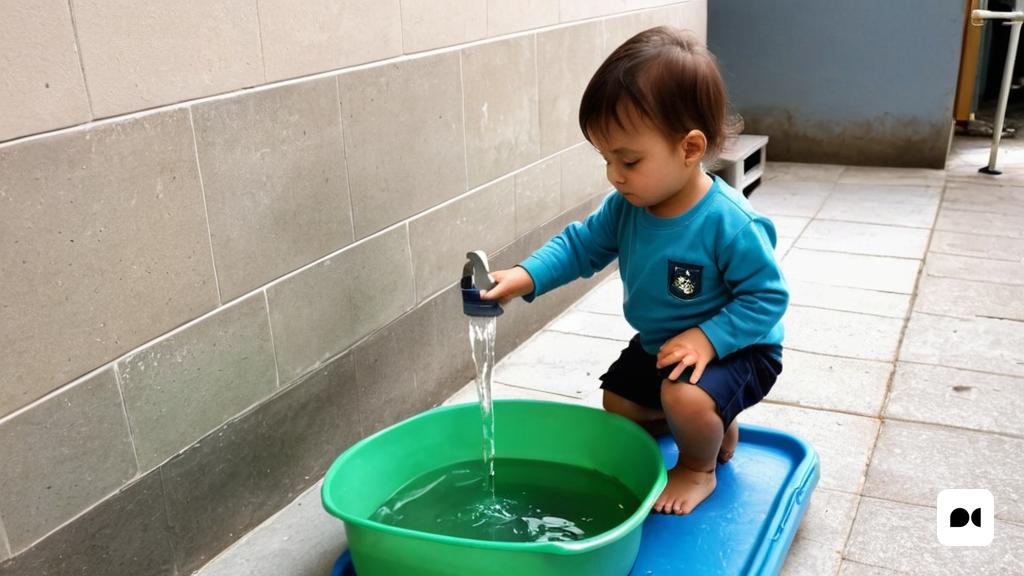Exploring water in preschool
In the day-to-day life of a 0-3-year-old preschool, there are many moments in which scientific ideas related to everyday actions appear. Water is continuously present in different forms: drinking, washing hands, watering, cooking… This essential element changes matter, wets, weighs, changes… And all this, we discover in 0-3 ?
The educators, aware of the importance of water in life and at school, accompany the children in their processes and discoveries. With a calm presence and knowledge of the subject, the educators put words to what is happening, capturing the children’s attention and preparing new challenges. This allows children to interact with the water and take initiatives on their curiosities. Through this interaction, children can experience their relationship with water in a natural and unforced way.
A concrete example: Wash your hands
One of the daily moments in which water is present is when children wash their hands. In this situation, the educator can observe and put words to what the children are discovering. For example, if a child tries to take the water with his hand and gets wet, the teacher can explain to him that the water falls hard and that if they turn off the tap a little, he won’t get so wet. Thus, through this interaction, children can learn about the properties of water and how to interact with it safely.
Taking advantage of learning opportunities
Throughout the course, the educators have identified various learning opportunities related to water. Apart from activities such as pouring water, taking advantage of rainy days to go out to smash puddles or clean bowls with sponges, learning situations have been created that allow children to explore and discover more about water. Through these experiences, children can ask questions, interact with others and take initiatives based on their curiosities.
Promoting rich learning environments
To favor these learning situations, the educators prepare the materials and the space in an appropriate way and constantly reflect on the decisions they make to accompany the children. This involves giving children autonomy, putting words to what happens, setting clear boundaries and creating learning environments rich in stimuli. In addition, educators work as a team and reflect together to make conscious decisions that allow them to make the most of everyday situations as learning opportunities.
conclusion
Water is a fundamental element in everyday life at the 0-3 year old school. Through interactions with water, children can discover its properties and relate to it in a natural way. The educators, with their knowledge and support, accompany the children in this process of exploration and discovery, creating rich and stimulating learning environments. Thus, water becomes a tool for children’s development and an element present in their daily experiences at the children’s school.

